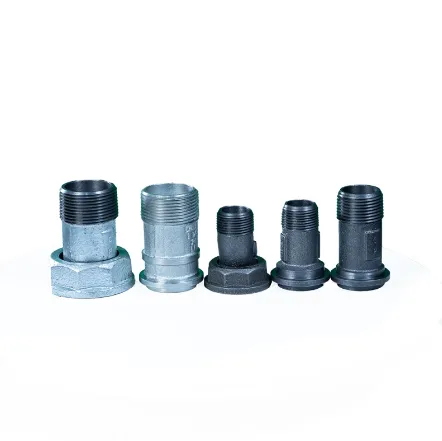Navigating the selection of plumbing components requires a clear understanding of each element’s role in ensuring an efficient system. Among these components, the 180-degree elbow stands out due to its unique structural function and importance in various systems. Despite its simplicity, this piece plays a crucial role in guiding the direction of pipes, making it indispensable in complex piping networks.

A 180-degree elbow is specifically designed to connect lines together, allowing fluid or gas to transition smoothly in the opposite direction. This capability is crucial in environments where space constraints prevent the installation of straight or less curved piping. In factories, power plants, and even residential developments, the reversal of flow direction without turbulence or flow obstruction ensures that systems remain efficient and operational. By maintaining seamless flow transitions, 180-degree elbows prevent pressure loss and minimize wear on system components, ultimately extending their lifespan.
When evaluating the materials used for 180-degree elbows, one finds a wide spectrum of available choices, each catering to specific needs. Stainless steel elbows are renowned for their strength and resistance to corrosion, making them an ideal choice for harsh environments such as those involving chemical exposure or extreme temperatures. By contrast, PVC elbows serve well in environments where cost-effectiveness is the priority without compromising on performance in less demanding applications. The material choice depends on the specific needs of the application, aligning with both operational requirements and budget considerations.

Expertise in the installation of 180-degree elbows is essential to their performance. Poorly installed components can lead to significant issues like leaks or pressure loss, which can compromise the entire system. Therefore, sourcing a reputable manufacturer and trusted installation professional is critical. Reputable manufacturers typically offer detailed specifications and technical support to guide the installation process, ensuring compatibility and optimal performance. Proper sealing techniques, such as using the right gaskets and ensuring correct torque applications on flanges, are critical steps in preventing leaks and ensuring a long service life.
2 180 degree elbow
Understanding the precise measurements needed is also essential in selecting the correct 180-degree elbow. Piping systems demand precise angles to fit into limited spaces or to meet specific engineering guidelines. This is especially true in industries such as oil and gas or chemical processing, where safety and regulatory compliance are paramount. The industry has established standards like ANSI, ASME, and others, which must be adhered to, ensuring the components meet the necessary safety and operational benchmarks.
Trustworthiness in the supply chain of these components is another crucial consideration. Working with well-established suppliers, who have a track record of quality and dependability, ensures not only the integrity of the product but also its performance reliability. It is important to verify supplier certifications, such as ISO standards, to ensure they adhere to global quality standards.
For industries looking to future-proof their piping systems, investing in smart technology integration can be beneficial. Advanced sensors and monitoring systems can be incorporated with traditional piping solutions, including 180-degree elbows, to predict wear and optimize maintenance schedules. This integration offers a proactive approach to system management, potentially saving significant repair costs and preventing downtime.
In conclusion, while a small part of a larger system, the 180-degree elbow is pivotal in ensuring efficiency, reliability, and longevity in piping networks. Its correct selection, installation, and maintenance are integral to system integrity. Whether it is employed in industrial, commercial, or residential settings, attention to material selection, supplier reputation, and strict adherence to installation standards will safeguard against operational inefficiencies and system failures. As environments evolve and become more demanding, so too will the requirements from these little yet significant components, cementing their relevance in present and future installations.
Post time:
Фев-15-2025











